Having a tech-saavy ten year old with his own laptop in our home, we’ve known for quite awhile that we would eventually have conversations about “inappropriate content” online with him, and how we need to handle/respond to that content. We’ve had some conversations about this in the past, but until this past week hadn’t encountered an actual situation of inappropriate content that we needed to discuss. This evening, we (my wife, two oldest kids and I) had an important discussion about inappropriate Internet content, the value of filtering, malware, security dangers online, IPTV, Internet advertising, intellectual property, and responsible uses of technology at our house following dinner, and it all started with discussions about the television program Avatar.
My son and wife are BIG fans of the Nickelodeon television program Avatar, as I’ve noted in some previous posts. Since our son, Alexander, got his own laptop last November, he’s enjoyed going online and watching episodes of Avatar directly over the Internet when he has time at home. The opportunity to watch a television show of one’s choice, at the time and place of one’s choosing, is a big trend that is coming to all of us in the months and years ahead. We are just catching glimpses now of the power and value of IPTV today, but rest assured this phenomenon is only going to grow in the days ahead. I can’t say I’ve ever personally watched an entire episode of Avatar, but I think it is an interesting show and am glad my son and wife enjoy watching it and talking about it so much.
This past week Alexander spent spring break in Lubbock, Texas, with his grandparents there. He took his laptop, and evidently enjoyed learning to play a computer version of solitaire from Granddaddy as well as Travian, watching episodes of Avatar, and doing other things. It would have been nice if he’d spent a lot of time playing outside and getting exercise, but I think he really spent most of his time on the computer. We’ll address that tech-entertainment vacation trend this summer when we spend an entire week in early June camping without access to ANY type of digital technology tools, save a cell phone for emergency uses only. 🙂
This afternoon Alexander was telling me about some problems he’d been having accessing and viewing the Avatar episodes online, and a website he’d seen that had a “not so nice” picture on it that he didn’t like. After all our evening tasks were taken care of, I asked him to walk me through the websites he’d been visiting, what he’d had problems with, and what he’d encountered. He reported that when he was in Lubbock, he’d been able to see the latest Avatar episode on a different website than the one he had been using and had bookmarked, but had not been able to access it from home here in Oklahoma. I asked him about the picture and website he’d seen that he didn’t like, and he described it as:
A picture of a woman dressed all in black, who had a large knife next to her that had blood on it, and there was blood on the ground and all over the walls in the picture.
I haven’t seen this picture, but clearly that photo is not something I’d want him seeing and spending lots of time thinking about. The entire story I am recounting here has multiple “takeaways” and lessons to be learned, but one of the clear ones is this: Kids “know” when content they are seeing online is inappropriate. I am so glad we have an open relationship at this point where we are comfortable talking about this sort of thing, and discussing it. Alexander had not been going online to look for images or videos that were inappropriate, he had been looking for episodes of his favorite TV show, Avatar. Still, even when people are looking for innocuous things online, the potential exists (and will likely only grow) that they will encounter (and have to make decisions about) objectionable content of some kind. It is vital, as I maintain in all my presentations about Internet safety, digital dialog, and safe online social networking, that we continually support OPEN dialog and conversations about these topics in our homes, our classrooms, our churches, and the other formal and informal organizations in which we participate.
Here is the recounted story of how Alexander happened upon this website, which DOES have current versions of Avatar episodes available for free online viewing, but also has inappropriate content that made him uncomfortable.
For some time (several months at least) Alexander has used the website avatarchapters.org to watch new episodes of Avatar. For some reason, those flash-based videos have stopped playing for him on his five year old Macbook Pro laptop, which is running Mac OS 10.3.9. The website provides a link to download the episode, and he had tried that once, but it took a long time and he wanted to view the show directly online without having to jump through hoops and download the files directly to his hard drive. As a result, he used Google to search for the name of the latest Avatar episode he wanted to watch:
When he was in Lubbock at his grandparents’ house, he accessed the web via their high speed Internet connection which is completely unfiltered for web content. I had shown his grandfather how to setup OpenDNS (a free service) to provide basic content filtering when we visited them back in February, but he has not (to date) implemented those protection settings. As a result, when Alexander did this Internet search on their home network, he was able to click on and view the website that came up in the search results. That website included the photo he described which he knew was “not good.” (For instructions about using OpenDNS as a free content filter for your home, school, or other organizational network, see my post “Home Internet Content filtering needs: Solved with OpenDNS” from January 1, 2008.)
After he returned home to Oklahoma and got online at our house, Alexander was NOT able to click on that website and access the same Avatar videos, along with the accompanying inappropriate images. Clicking on the first link from the search query described above on our home network, protected with OpenDSN settings (that are made at the ROUTER level, not on each individual computer/laptop) brings up the following screen:
Alexander had encountered this screen, but hadn’t realized why it had come up or what the reasons were for it. This was the background for our conversations this evening which touched on many important issues relating to Internet content. We did discover that the current season (season 3) of Avatar is available on the iTunes Music Store for purchase, and we bought a “season pass” to the show:
Unfortunately, according to Alexander, the latest episode which he HAD watched in Lubbock online is NOT yet included in the iTunes version, so there must be some delay in getting that DRM-protected version online at the iTunes store. When it becomes available, however, we’ll now have it in our iTunes library along with the rest of the season’s shows.
In talking about this situation together as a family, we discussed that earlier in the week, my wife had been unable to visit a website she had clicked on from an email she received. The OpenDNS message had said the website was blocked because it was “adware,” and we had discussed at that time how if we’d been using Windows-based computers (much more prone to malware attacks than Apple computers today) and had NOT been surfing the Internet behind OpenDNS content filter protection, that website could have installed a malicious program on her computer to steal her identity, get credit card information, etc. So, my conversations with Alexander this evening were actually the SECOND instance this week when I’ve been thankful for free OpenDNS filtering.
What follows is my attempt to briefly summarize what I see as the major “lessons learned” or takeaways from this situation and the conversations which ensued, both with Alexander as well as with our family together.
- BASIC CONTENT FILTERING IS GOOD AND NEEDED: Just as U.S. schools receiving E-Rate funding are required to have a basic level of content filtering in place to protect students from inappropriate content online, it makes sense for parents to do the same thing at home. I’m not encouraging parents to go overboard and censor the web for “personal productivity” concerns as well as offensive content, or to encourage parents everyone to embrace the tools of “big brother supervision” and lock down the home network like some IT network administrators do. I do think, however, that the two situations we encountered in our home, online this week show the value of basic content filtering using a free service like OpenDNS. Without that BASIC level of content filtering, I’m not sure whether we would have had the conversations we did this week about appropriate content and malware dangers. Basic levels of content filtering on networks can be good, in my view, both because they protect us from potentially offensive content, and because they can protect our computers and network from security threats we certainly don’t want any part of.
- CONVERSATIONS AND OPEN DIALOG ARE THE KEY: There are not any technological solutions to the types of problems we ran into this week at home online, and I am discussing in this post. A tool like OpenDNS can help, but we cannot “guarantee” no one on our home network is going to access inappropriate content or download/install malware unless we agree to just shut off our connection to the Internet entirely. Doing that would be stupid, in my opinion. The wealth of high-quality, valuable content available online today is staggering and mind-blowing. When I was on the iTunes store tonight, I wandered over iTunes U and the MITOpenCourseWare site, and discovered the amazing (and of course free) educational video project “Visualizing Cultures.” (I saved this to my del.icio.us social bookmarks.) WOW. It’s too bad I have to go to work tomorrow, as I’m sure I could spend all day viewing, thinking about, discussing and working with the content from that site. Those with access to our digital world today stand virtually ZERO chances of being “bored” with nothing to do. Of course, digital content can be used in constructive or destructive ways, but the point is that this ACCESS can be used in phenomenally positive ways. We’d be crazy to deny our children and ourselves access to the beneficial content of the web. The challenge is remaining safe and appropriate in our access to web content, and engaging in regular CONVERSATIONS about ethics and appropriate use. This is a conversation about “digital citizenship,” which is a larger conversation than “just” Internet safety which we need to be having with students in our classrooms as well as our homes.
- SOCIAL INOCULATION IS THE GOAL: Authors Stephen Glenn and Jane Nelson introduced me to the concept of “social inoculation” in their outstanding book “Raising Self-Reliant Children in a Self-Indulgent World: Seven Building Blocks for Developing Capable Young People.” Whether the topic is smoking, illegal drug use, drinking alcohol, sex, or anything else, as parents and care-givers for children we must recognize our ultimate responsibility is preparing children for independent decision-making OUTSIDE the sphere of our immediate control and supervision. While we try and provide some basic levels of content filtering and protection for our children as they surf the Internet at home, we recognize that already (at age 10) they are going outside the realm of our control and encountering situations online where they have to make judgement calls on their own. This dynamic makes it VITAL that our children and students have the freedom and abilities to make decisions and yes, even make some “mistakes” when it comes to their use of online resources and tools. Without mistakes or problems, and the conversations which can follow them, there is little opportunity for learning and growth. We need to structure our environments at both home and school so that: 1) Students have some freedom to make choices and decisions online about content, and 2) We provide opportunities for regular conversations about the issues which come up. We can rest assured that if kids are using the Internet, important topics of conversation relating to digital citizenship ARE going to come up.
- MEDIA LITERACY IS KEY: When Alexander walked me through the website option to download an episode of Avatar, I saw how the download link redirects to another site, megaupload, which includes image advertising for an online dating site (ostensibly.)
After entering a captcha and avoiding the potential to intentionally or unintentionally click on one of the provided advertising links, users are taken to a screen which requires a 45 second “waiting period” to access the free download link:
I explained to Alexander how this site was making money by getting people to click on their advertising, and how they wanted you to download their “free” downloader program to make the downloads faster, but that program might itself contain harmful malware. When we clicked the download link, a popup window automatically came up to an “adult” dating site, which OpenDNS blocked as a site containing nudity and pornography:
Alexander not only did not know about the malware dangers from websites like this, he also did not realize the fact that inappropriate popup sites could open just by clicking a download link for an Avatar television program episode. This reveals the importance of discussing media literacy with our children and students, to help them become more saavy and aware of the ways different people attempt to manipulate and use them for their own financial gain via advertising, popup links and malware. Again, these conversations are essential parts of bigger discussions about digital citizenship.
- DISCUSSING ETHICS IS KEY: In addition to talking about technical details of this entire situation tonight, we also talked about the REASONS why we don’t want to spend time looking at images that are inappropriate and make us feel uncomfortable. I told Alexander and my daughter the story of how several years ago, images of a video game I just saw in a magazine had actually given me nightmares. Visual images can be POWERFUL, and they can have powerful effects on what we think about when we are both awake and we sleep. What we think about shapes who we are as people and who we become. For more on this, see my post from January 2005, “Images from GameInformer Magazine Gave Me Nightmares.” I was glad we had an opportunity to discuss this aspect of inappropriate content at home, because I’m not sure this is a conversation that is taking place AT ALL right now in my children’s classrooms at school. It is not enough to just tell our own children or our students, “Don’t look at that.” Kids are smart. We also need to talk about the REASONS why we shouldn’t choose to spend our time looking at certain images or videos, whether we are young or old. This ethical conversation about digital content is VERY important, and while it is easier to have this at home with my own children, I think it is also important and possible to have it in the public school classroom in a purely secular context.
I’ll close this post with a final story. When I was an elementary computer lab teacher and integration facilitator in Lubbock, Texas, we had a situation in the 2000-2001 school year during “free friday” specials time with several of our sixth grade girls. During this “specials” time, students could self-select either art, music, PE, or the computer lab for 45 minutes. Three girls who chose to come to the computer lab ended up getting into a chat room that was linked from the BET website. The girls had some inappropriate text-chat conversations with some individuals, and when I realized what was happening I had them step away from the computer, captured some screenshots of what had happened (easy on a Windows98 computer by pressing the “Print Screen” button to capture the entire screen to the clipboard, and then “pasting” the images into a MS Word document) and then referred this situation to our principal. We ended up meeting later that day with each of the girls’ parents in the office, and then meeting with the girls as well as our school counselor. The situation was unfortunate at one level, but it was GOOD on another.
Thank goodness this situation happened at school, instead of after school at one of the girls’ houses in an unsupervised context. The fact this DID happen at school gave us, as adults (educators and parents) opportunities to have VERY important conversations together with these students. The sixth grade girls had very little idea who they were talking to, or what the potential danger was of talking to strangers online. While there was some profanity included in the messages sent by the others in the chat room, I do not recall that our students or the people they were chatting with were revealing personal information about themselves. Basically, at the time we considered ANY sort of chat with others outside the school online to be bad and dangerous. The fact that some people in the chat room were using profanity signaled that the conversation was not appropriate for school, but the fact that this situation happened at school AND teachers were involved who brought the parents in to talk about it was a good thing, in my view.
The Internet has grown in its sophistication and capabilities by leaps and bounds since this incident happened in the spring of 2001. That growth certainly has a VERY positive side, as well as a dark side. During the same school year, we had students interviewing war veterans for a social studies project who brought cassette tapes of their interviews to school so they could share their interview digitally with others. At the time, I did not have the knowledge, skills, hardware, or professional learning network connections required to convert analog audio interviews into digital form and share them online. That capability is certainly present today. I don’t share that story to detract from the overall theme here of Internet safety and digital dialog, but I do want (as usual) to convey a BALANCED view of the Internet’s potential use for positive learning and constructive communications.
We need to be having regular conversations in our homes and classrooms about digital citizenship. The Internet can be a dangerous place fraught with dangers, but it is also filled with opportunities for positive learning and communication experiences. I’m delighted to have discovered OpenDNS about three months ago, and would encourage you (if you are not already) to configure your own home network to use its free content filtering features. While I love and appreciate OpenDNS, I am even more thankful for the opportunity to have conversations about digital ethics and safety like we had this evening as a family. We need to utilize technology tools to help make our homes and schools safer, but ultimately we must remember that we are preparing and equipping each other to “be the filter” out in the wider world. If we have an Internet connection in our home, that “wider world” can be in our family room or bedroom. Ultimately, the “filter” we are developing is our own brain, and that development process requires knowledge as well as “digital discipline.” Regular communication with others who love us and care for us is essential in this developmental process as well.
Technorati Tags:
safety, internet, online, socialnetworking, chat, school, education, lesson, learned, opendns, ethics
If you enjoyed this post and found it useful, subscribe to Wes’ free newsletter. Check out Wes’ video tutorial library, “Playing with Media.” Information about more ways to learn with Dr. Wesley Fryer are available on wesfryer.com/after.
On this day..
- Schools Blocking YouTube and Digital Citizenship – 2019
- Opera Mini Browser Coming to the iPhone / iPod Touch? – 2010
- Gotta Keep Reading – A YouTube Remix of the Black Eyed Peas by Florida Students – 2010
- Homegrown YouTube Options – 2010
- Considering how race still matters in America for dropouts and student identity – 2009
- Actively opposing creativity fatigue – 2008
- Flat world 1:1 learning – 2007
- Google Mars and 3D earth – 2006
- Stats on Kids and New Media – 2006
- International perspectives on teaching and learning in an information society – 2006

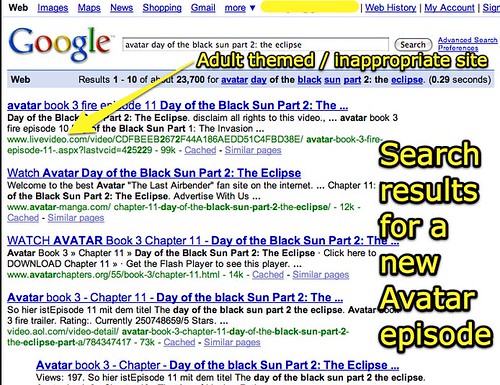
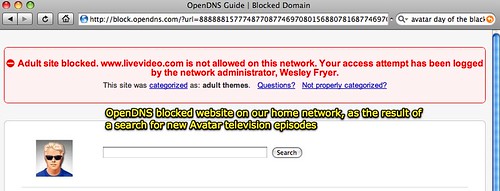
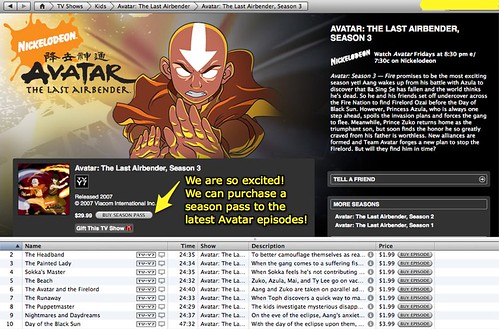
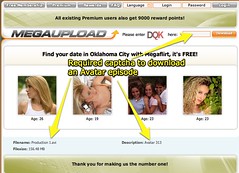
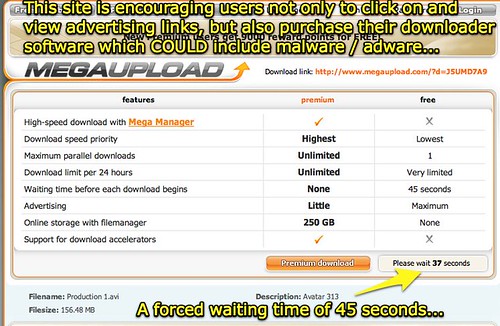

Comments
6 responses to “The Value of OpenDNS (free) content filtering at home”
Re: Avatar
When I was designing an online course I wanted to use an avatar. At the time, I worked for an insurance company with blocking software. I searched “avatar” on Google and was unable to access any sites. I got a big “stop, your activity is being reported” message. It was a learning experience for the IT folks I had to contact to gain access to the sites I wanted…they learned what an avatar was in the context of online learning. Avatar, in their eyes, was a game. I wonder they are letting employees download Second Life now…
Wonderful post. I think it is very important for all people to understand how to search the internet safely and not go to links with inappropriate material. I truly believe that parents need to take time and make sure the internet is safe for their children and their children understand what is appropriate and what is not. Using filters for your children is also a very good idea, it seems you can type anything into google or any other search engine and get material that is inappropriate. I also feel that schools should provide some class on computer ethics. I have used the megaloader site a few times and understood right away what they were trying to do; they really don’t make it easy to find what you are looking for. Thank you for posting this and I hope more people will follower your example.
Isn’t the lesson here that you shouldn’t watch television programs on unofficial sites because they’re likely to be stolen, especially when obviously legitimate sites exist, such as iTunes?
I’m even concerned by a kid watching cartoons when other recreational options abound.
My kids grew up with their own laptops and wide open net access for most of their lives. They’ve survived.
There certainly are important lessons here about intellectual property issues. I’m concerned about living out-of-balance as well, and we’re discussing and addressing that. I think that being able to time and place shift in watching cartoons or anything else can be a good thing, if it lets us be more intentional about that media we consume and when we consume it. I loved some cartoons growing up and am not opposed to them by any means… I know your kids had wide open access to the web as they were growing up, Gary (from hearing you mention this before) and certainly some home filtering situations seem to beg for more openness rather than less… I do think, however, that what we have today is a different web in many ways than what we had just 10 years ago, in terms of the security risks and malware situation. I’ve heard an unpatched Windows XP computer will generally get infected by malware in less than 5 minutes when it is plugged directly into a high speed Internet connection, not protected by a firewall. I’m advocating for balance here. I cannot in good conscience encourage any organization, individual or family to provide a completely open connection to the Internet today unprotected by any type of firewall or at least minimal content filter.
[…] article about free DNS services a couple weeks ago in some IT magazine, and now Wesley Fryer has a post about using OpenDNS at home for content filtering. Mind you, we’re not talking about providing nameservers for […]
As a continuation of this conversation about Avatar videos, I have to say my son has been VERY disappointed at the iTunes Avatar series we purchased. It is now behind FOUR episodes, and we have no idea when it is going to update. No idea why. We’d apparently have been better off using a DVR to record the episodes. 🙁